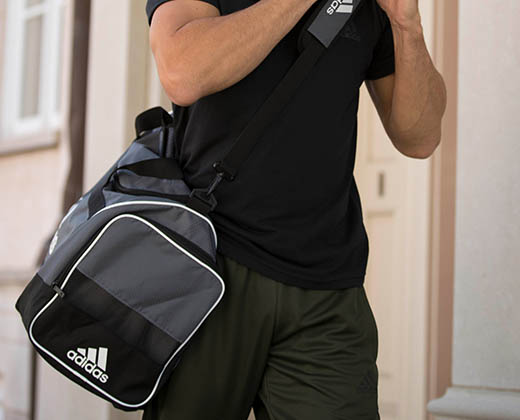What is Percussive Therapy?
Learn the basics of this effective sports recovery method with these Pro Tips.
Feeling a little tight or sore before your workout? Looking to add a new recovery method to your training? Percussive therapy could be your new favorite addition to your exercise routine.
But what is percussive therapy? How does it work? Theragun creator and founder Dr. Jason Wersland gives some insight into this effective and useful sports therapy method.
PERCUSSIVE THERAPY BASICS
This sports recovery method aims to target soft tissue pain and soreness by rapidly stimulating blood flow to a specific area. This treatment can be used on muscles, ligaments and tendons to help relieve tension.
The stimulation from percussive therapy devices, according to Wersland, breaks down into three components: amplitude, frequency and torque. “The amplitude is 16 millimeters – about half an inch – which means that’s how far [the percussive therapy head] moves back and forth,” Wersland says. “And the frequency – which is 40 percussions per second – is how many times it touches your body in a second. And then, the force or the torque or the power – which is how strong the motor is and can resist the pressure.”
You can compare this sports therapy method to Swedish tapotement, which involves quick chopping, slapping or beating strokes on the body. Wersland states percussive therapy is, “Like a deep-tissue massage without the pain. So, you’re actually stimulating these really good feeling fibers in your body while you’re also giving deep tissue treatment. That deep tissue treatment is what relieves the tension in your body and what makes it feel so good.”
HOW DOES PERCUSSIVE THERAPY WORK?
The intent of percussive therapy’s rapid movement on target areas is to work against pain and soreness, according the Wersland.
“Your body has a hierarchy and as it receives stimulus throughout the day, you may have pain,” he says. “When you take a product like this and you put it on your body, it stimulates a faster pathway to the brain which overrides that pain pathway and actually calms the body. So, we’re actually working on a pathway that’s faster to the brain, and the brain has to pay attention to that higher stimulus.”
Wersland adds the body cannot sustain tension during stimulation with a percussion massage device. This helps explain the quick relief felt when performing percussive therapy.
WHEN TO USE YOUR PERCUSSIVE THERAPY DEVICE
There is no set standard as to when you can use your percussion massage device. The stimulation can be beneficial before, during and after intense activity. Wersland recommends using your percussive therapy device in all three timeslots. He also suggests targeting your intended area with different approaches.
When practicing percussive therapy before your workout, Wersland says, “What you’re going to do is use it on either end of the muscle and then the muscle belly for 10 seconds in each spot and that’s a great pre-warmup, pre-workout.”
While training, percussive therapy can be a useful tool in between sets or exercises. According to Wersland, “You’re actually going to use it right in the muscle belly. This oxygenates the muscle, gets that lactic acid pushed away and allows the muscle to move without tension.”
Finally, after you’ve completed your workout or training session, Wersland says, “You want to use [your percussive therapy device] for two minutes on that whole area. We say, 'paint the body.’ Everywhere you put this it increases that blood flow to that area, pushes out those post-exercise toxins and allows your body to recover.”
You can use percussive therapy in various settings, whether in the gym, on the field or on the tee box. With these Pro Tips, you can have a better understanding of this effective therapy technique.
Need some help loosening up or cooling down after an intense round of golf? Follow these Pro Tips and learn some helpful percussive therapy protocols for golfers.






